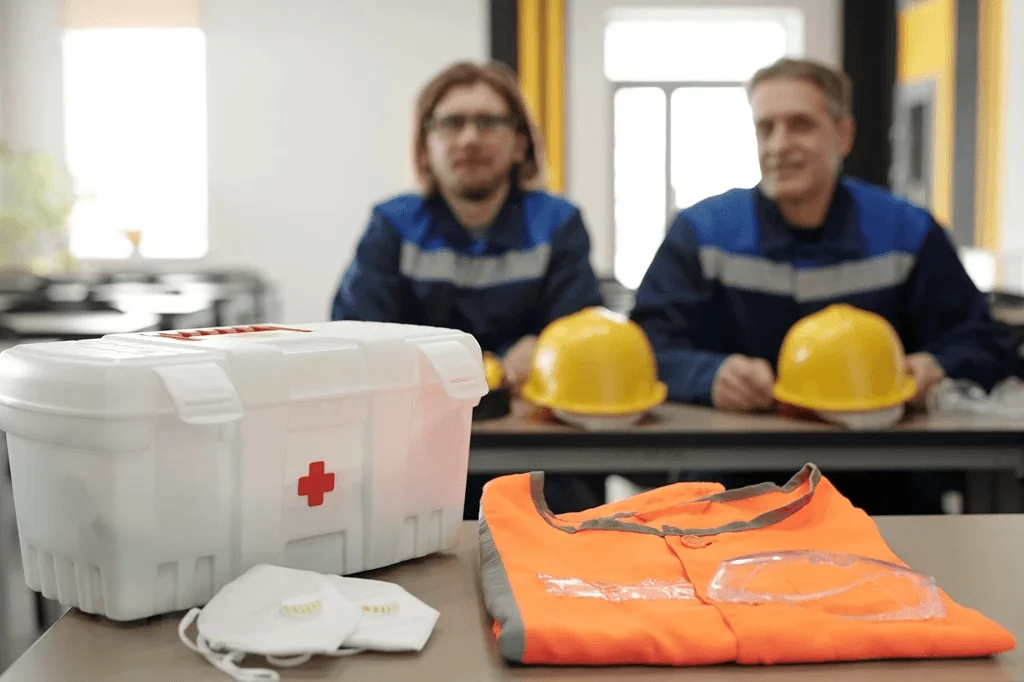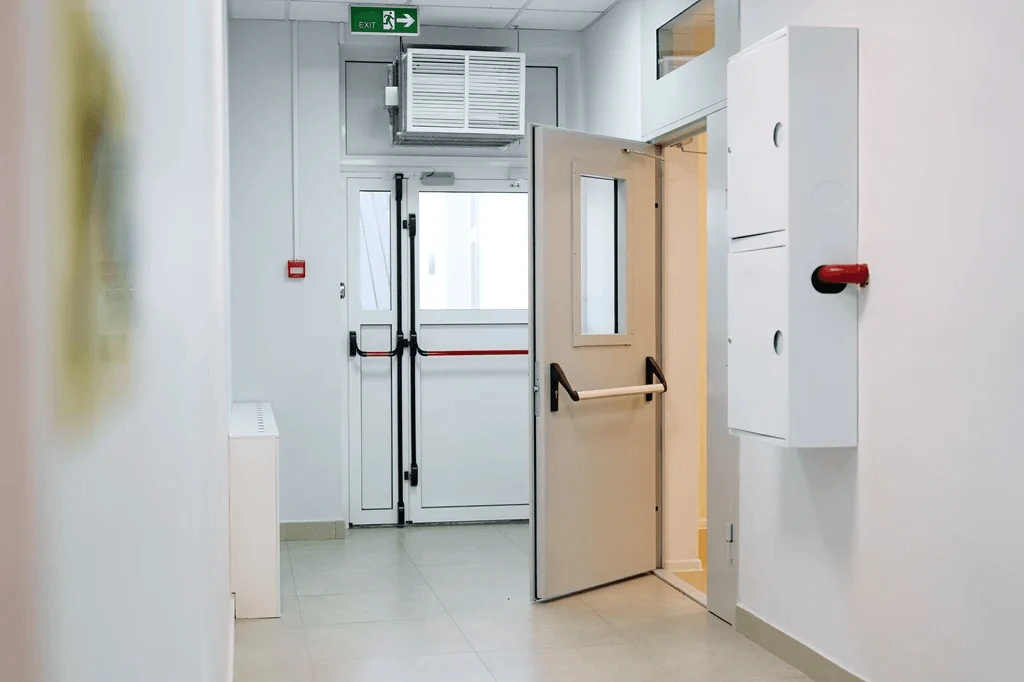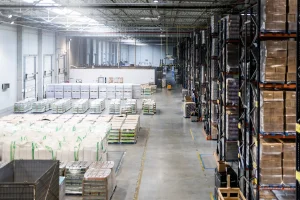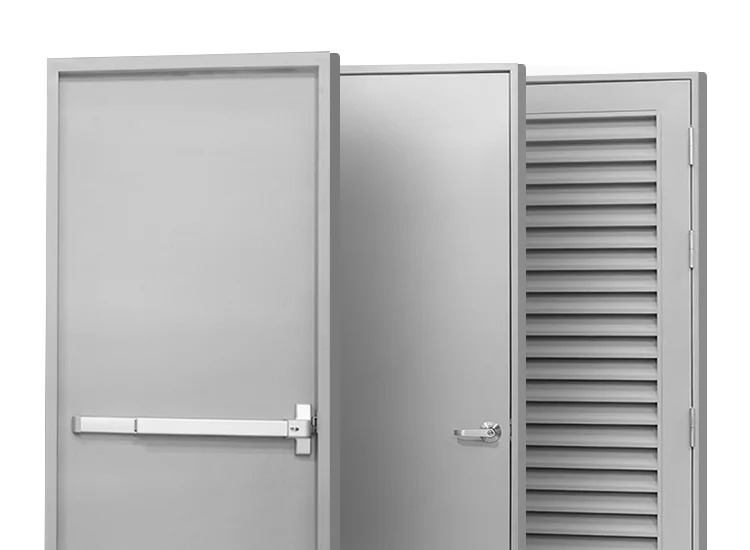Emergencies in the workplace can occur at any time, and their impact on employees, business operations, and safety is profound. Therefore, being proactive about workplace emergency preparedness is crucial to minimize disruptions, reduce risks, and protect lives.
This blog explores common types of workplace emergencies, their implications, and how preparation, including upgrading infrastructure like doors, helps mitigate potential harm.
What is a Workplace Emergency?
A workplace emergency is an unexpected situation that poses a critical threat to employees, customers, or business operations. These events may arise from natural disasters, human-caused incidents, or technical failures. They include fires, chemical spills, medical emergencies, or even acts of violence.
The consequences of a workplace emergency range from minor operational disruptions to catastrophic loss of life or property. Understanding the risk underscores the need to have a comprehensive emergency management plan in place. Impacts may include:
- Employee Safety: Injuries or fatalities may result from insufficient safety protocols.
- Operational Downtime: Business operations may halt entirely, leading to financial losses.
- Workplace Morale: Poor emergency response undermines employee confidence and trust.
Essential Elements of Workplace Emergency Preparedness
Workplace emergency preparedness isn’t just about responding when disaster strikes; it’s also about building a strong foundation that allows businesses to navigate emergencies efficiently and effectively. Here are the fundamental elements that every workplace should incorporate:
- Comprehensive Risk Assessment: Understanding the specific risks your workplace faces is the first step. Evaluate your environment to identify vulnerabilities—whether it’s outdated electrical wiring posing a fire risk or the geographical likelihood of natural disasters.
- Detailed Emergency Action Plan (EAP): A well-documented emergency action plan provides clear instructions for various scenarios. It includes evacuation routes, designated meeting points, and protocols for notifying emergency services. Employees should have easy access to this plan.
- Regular Training and Realistic Drills: Training ensures employees know what to do and where to go during an emergency. Beyond theoretical sessions, realistic drills simulate high-pressure scenarios, so employees practice reacting under stress.
- Accessible Emergency Supplies: Stocking up on essential emergency items is vital. Every workplace should have first aid kits, fire extinguishers, flashlights, and backup communication devices placed strategically for quick access. For environments with unique risks, specialized spill kits or respiratory masks might also be necessary.
- Robust Communication Protocols: Emergencies create chaos, and clear communication can be the difference between order and panic. Invest in systems like mass notification software, public address systems, or even group text alert systems to ensure everyone is informed promptly.
The Importance of Emergency Readiness in the Workplace
In a high-stakes emergency, preparation is a necessity. When businesses prioritize readiness, they gain an advantage that goes beyond simply mitigating risks. Here are the reasons that underline the importance of readiness in various types of workplace emergencies:
Protects Lives and Minimizes Harm
Emergency readiness reduces uncertainty and confusion during a crisis. Employees trained to respond appropriately are less likely to panic, resulting in faster, safer evacuations and potentially life-saving actions. Moreover, clear protocols ensure that injuries or medical conditions receive immediate attention, reducing long-term complications.
Safeguards Business Operations
Emergencies lead to severe downtime, disrupting operations and resulting in financial losses. On the other hand, readiness minimizes operational interruptions by enabling businesses to resume work sooner. For instance, a company with well-defined backup systems and recovery plans can keep essential functions running even under duress.
Strengthens Compliance and Liability Protections
Many regulatory bodies mandate workplace safety protocols, such as fire safety measures or first-aid accessibility. Businesses that meet these standards avoid penalties, lawsuits, or liability claims. Beyond compliance, demonstrating a commitment to employee safety builds trust within the workforce.
Preserves Reputation and Employee Morale
Employees feel more confident and valued when they know their safety is a priority. A business that prioritizes readiness earns respect and loyalty, both internally and externally. Customers, clients, and partners also view safety-conscious organizations more favorably.

Common Types of Workplace Emergencies Every Business Should Prepare For
While emergencies vary by industry and location, some are common across all workplaces:
- Fire Emergencies: Caused by faulty equipment, flammable materials, or arson, fires require evacuation and proper fire suppression.
- Medical Emergencies: Health incidents such as heart attacks, seizures, or workplace injuries demand immediate first aid and professional medical attention.
- Natural Disasters: Earthquakes, floods, hurricanes, or tornadoes sometimes occur with little warning, making evacuation plans essential.
- Chemical Spills: Especially relevant in manufacturing or laboratory settings, these emergencies require quick containment and proper ventilation.
- Workplace Violence: Acts of violence or threats to safety necessitate lockdowns or evacuation procedures.
Proven Strategies to Manage Various Types of Workplace Emergencies
Managing workplace emergencies requires more than preparation—it demands the right strategies to ensure a coordinated and effective response. Below are actionable steps to help businesses navigate emergencies with confidence:
1. Establish a Dedicated Emergency Response Team
Designate a team of employees responsible for implementing emergency protocols. This team should include representatives from various departments and levels of the organization to ensure broad coverage. Training this group to handle specific scenarios equips them to lead others during high-pressure situations.
2. Strengthen Leadership During Emergencies
Clear leadership prevents chaos. Assigning roles such as evacuation leaders, communication coordinators, or first-aid responders ensures there’s no confusion about who’s in charge of critical tasks. Leaders should also possess strong decision-making skills to adapt to unexpected challenges.
3. Develop Flexible Evacuation Strategies
Evacuation plans should be designed to account for different emergencies, from fires to active shooter situations. Include alternative routes for scenarios where primary exits are blocked. Maps, signage, and lighting should be regularly inspected to ensure clarity and visibility, especially in low-light conditions.
4. Leverage Technology for Early Alerts and Communication
Invest in systems that detect potential threats early, such as fire alarms, carbon monoxide detectors, and weather alert integrations. Pair these systems with mass notification tools that send real-time updates to employees via text, email, or voice messages.
5. Conduct Post-Incident Reviews and Improve Continuously
Every emergency presents an opportunity to learn and improve. Conduct a thorough review of the incident, identifying what went well and where there’s room for improvement. Incorporate these insights into updated plans and ensure feedback loops with employees.
6. Foster a Culture of Awareness and Accountability
Emergency management isn’t just the responsibility of leadership—it’s a collective effort. Encourage employees to report hazards, participate in training, and stay aware of safety procedures. Promote open communication about safety concerns to create a culture where everyone is invested in maintaining a secure environment.

How Upgrading Doors Can Revolutionize Emergency Management
An often-overlooked aspect of emergency preparedness is the role of physical infrastructure, particularly doors. Installing high-quality, purpose-designed doors significantly enhances workplace safety and emergency readiness.
Benefits of Upgrading to Premium Doors
Upgrading to premium doors specifically designed for workplace emergencies isn’t just about meeting regulatory requirements—it’s also about creating a safer, more efficient environment for employees and visitors. Below is a closer look at how specific types of doors contribute to safety and emergency management:
Fire Exit Doors
Fire exit doors are purpose-built to resist extreme heat and flames, offering dual protection for both occupants and property.
- Heat Containment: These doors use specialized materials such as steel cores, fire-rated glass, and intumescent seals that expand under high temperatures to block fire and smoke. By slowing the spread of flames, they protect not only lives but also equipment and inventory in unaffected areas.
- Critical Evacuation Tool: Strategically placed fire exit doors create safe escape routes, directing employees and visitors away from danger zones. Their durability ensures they function reliably even under prolonged exposure to heat and smoke.
- Compliance and Liability: Fire exit doors are a legal requirement in most commercial spaces, particularly in high-risk industries. Beyond compliance, they reduce the chances of catastrophic losses, lowering potential liability in the aftermath of a fire-related incident.
Double Doors
Double doors serve as essential infrastructure for workplaces with high traffic or large-scale evacuation needs, providing a wider and more efficient means of escape.
- Increased Capacity: The dual-panel design allows more people to pass through simultaneously, reducing congestion during emergencies. This feature is particularly critical in densely populated buildings such as factories, malls, or office complexes.
- Versatility in Design: Double doors are often used at key exit points to accommodate a wide range of needs. For instance, they’re effective in accommodating individuals using wheelchairs or equipment such as evacuation chairs.
- Durability Under Pressure: Made from robust materials like reinforced steel, double doors remain operational even when pushed or struck by crowds during chaotic evacuation scenarios. This resilience ensures a smooth evacuation process without delays.
Exit Doors with Panic Bars
Exit doors equipped with panic bars are invaluable in emergencies, especially when individuals are under stress and time is of the essence.
- Ease of Use: Panic bars are designed to function with minimal effort. A simple push allows the door to open, eliminating the need for keys or manual unlocking mechanisms. This is especially beneficial in scenarios where people are disoriented or panicked.
- Improved Safety During Stampedes: By reducing the time it takes to open doors, panic bars prevent crowd bottlenecks that might lead to injuries during mass evacuations. Their intuitive design ensures anyone, regardless of physical strength, can operate them effectively.
- Compliance with Modern Safety Standards: Panic bars are often required under building codes for commercial properties, as they meet the highest standards for emergency egress. Installing these doors demonstrates a commitment to both safety and regulatory compliance.
Why Doors Matter
In emergencies, doors serve as more than just entry or exit points—they act as vital safety mechanisms. Their strategic placement, construction, and functionality directly influence how effectively a workplace manages life-threatening situations. When businesses invest in purpose-designed doors, they transform a simple architectural feature into a critical component of their emergency management plan.
Here’s a closer look at why doors are integral to emergency preparedness:
Barriers Against Threats
High-quality doors act as barriers against external and internal threats. Fire-rated doors block flames and smoke, while reinforced steel doors withstand forced entry or violent impacts during security incidents. These doors don’t just facilitate movement—they actively defend the integrity of the workplace.
Facilitators of Controlled Evacuation
Doors designed for emergencies, such as fire exits or panic doors, guide occupants toward safety. Their features, such as luminescent signage, wide openings, and panic mechanisms, reduce confusion during evacuations. When positioned strategically, these doors create clear pathways that streamline escape, even for large groups of people.
Role in Emergency Containment
During emergencies like fires or hazardous material spills, containment is key to avoiding escalation. Fire-rated doors seal off affected areas, containing the spread of smoke, heat, or toxic fumes. Similarly, doors in industrial settings have the ability to isolate chemical spills, protecting workers and sensitive equipment in other zones.
Improved Accessibility
Emergencies often involve diverse individuals, including those with mobility challenges. Doors that meet accessibility standards, such as wider frames or automated mechanisms, ensure that everyone can evacuate safely, regardless of physical limitations.
Psychological Reassurance
Well-maintained and purpose-built doors give employees confidence in their safety, reducing panic in high-stress situations. A workplace equipped with visible, functional emergency doors communicates a commitment to safety, fostering a sense of security that promotes better reactions during crises.

Take the First Step Toward a Safer Workplace Today!
Don’t wait for an emergency to reveal vulnerabilities in your workplace safety plan. Enhance your emergency preparedness with durable and reliable steel doors from Janus Steel. Explore our range of fire doors for commercial properties, or check out our guide and tips on building security. With our selection of doors that blend durability and elegance, you can protect your employees, safeguard your assets, and ensure peace of mind during unforeseen events.
What are you waiting for? Start upgrading your commercial space today—because safety should always come first. Contact us now!





